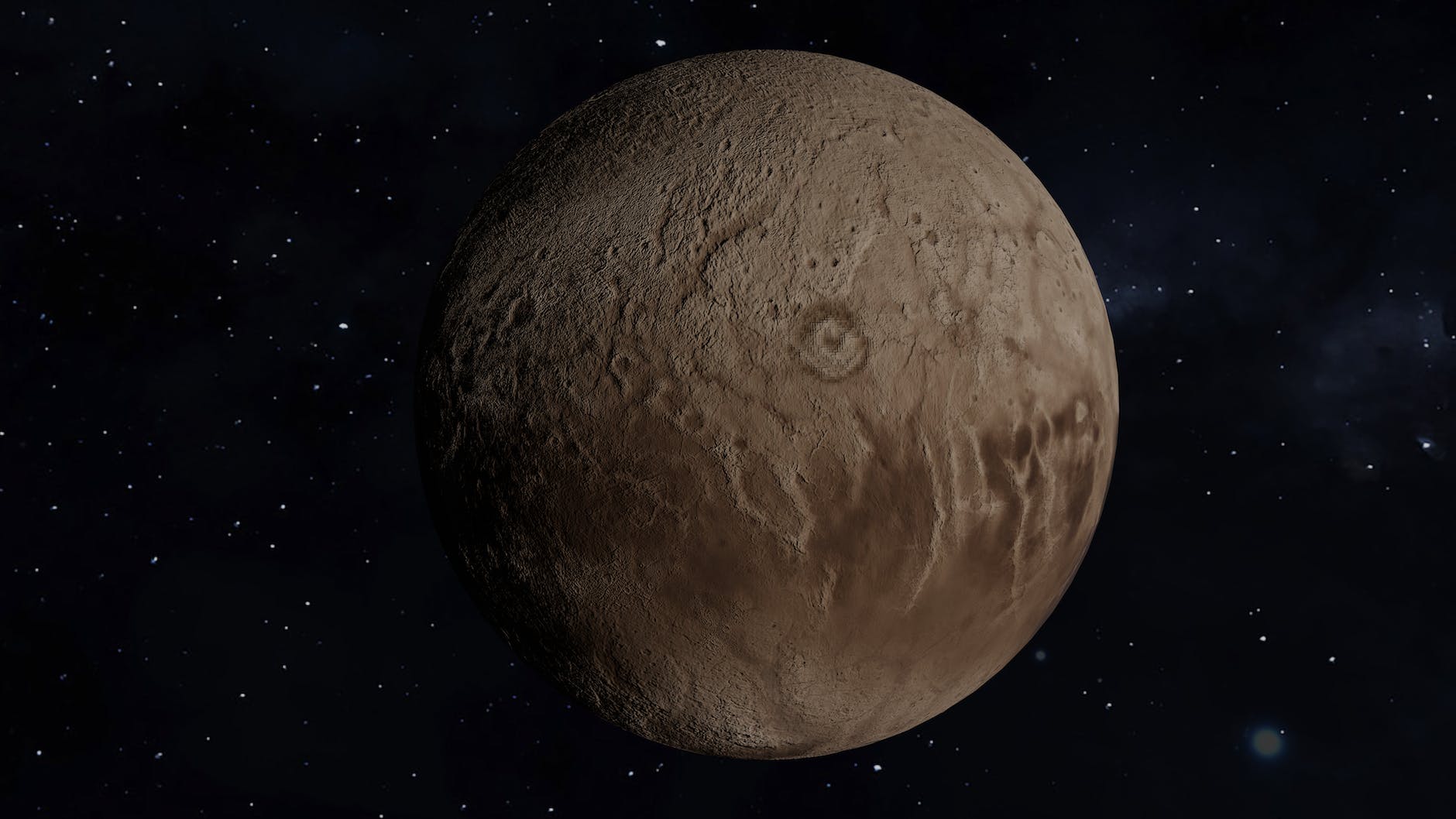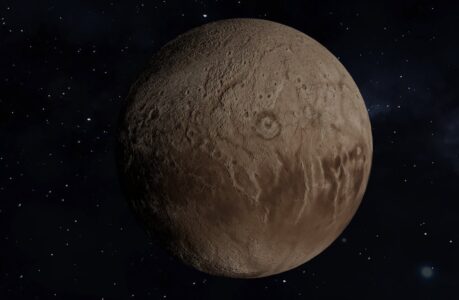Discover the Kuiper Belt, a celestial wonderland beyond Neptune’s orbit, teeming with icy treasures, and hidden cosmic secrets. Join us on a journey through the frozen depths of our solar system.
The Kuiper Belt, a remote and enigmatic region in the outskirts of our solar system, holds the keys to understanding the origins of our cosmic neighborhood. Spanning vast distances and hosting a myriad of icy bodies, this celestial wonderland has fascinated astronomers, scientists, and space enthusiasts alike. In this article, we embark on an extraordinary voyage to unravel the mysteries of the Kuiper Belt, revealing its significance, history, and the secrets it guards.
The Kuiper Belt: A Cosmic Neighborhood
Unlocking the Gates of the Kuiper Belt
Located beyond the orbit of Neptune, the Kuiper Belt is a region of space teeming with small celestial objects, primarily composed of ice and rocky materials. Stretching from about 30 astronomical units (AU) to 50 AU from the Sun, one AU being the average Earth-Sun distance, this distant realm is a treasure trove of frozen relics left over from the formation of our solar system.
A Diverse Cast of Characters
Meet the Inhabitants of the Kuiper Belt
The Kuiper Belt is home to an astonishing variety of objects, with dwarf planets, asteroids, and comets being the most prominent residents. Let’s dive into the fascinating cast of characters inhabiting this frigid expanse.
1. Pluto: The Former Ninth Planet
The Demotion of Pluto
Once considered the ninth planet in our solar system, Pluto was reclassified as a dwarf planet in 2006 by the International Astronomical Union (IAU). Despite its diminished planetary status, Pluto remains a star of the Kuiper Belt, known for its heart-shaped feature and a retinue of moons.
2. Eris: Pluto’s Challenger
The Rivalry of the Dwarf Planets
Eris, another dwarf planet in the Kuiper Belt, challenged Pluto’s planetary status. This icy world is nearly the same size as Pluto and ignited a lively debate about the criteria for planetary classification.
3. Haumea: The Elliptical Wonder
Haumea’s Unusual Shape
Haumea, a peculiar dwarf planet in the Kuiper Belt, has an ellipsoidal shape, unlike the spherical appearance of most celestial bodies. It also boasts a pair of moonlets and a rapid rotation, making it a truly unique member of the Kuiper Belt family.
4. Kuiper Belt Objects (KBOs)
The Silent Majority
Beyond the dwarf planets, the Kuiper Belt is crowded with Kuiper Belt Objects, often abbreviated as KBOs. These objects range in size from a few kilometers to hundreds of kilometers across and are remnants of the early solar system, offering crucial insights into its formation.
The Kuiper Belt’s Origins: A Cosmic Time Capsule
Peering Into the Ancient Past
To comprehend the Kuiper Belt’s significance, we must travel back in time, to the earliest moments of our solar system’s formation, approximately 4.6 billion years ago. This distant region serves as a cosmic time capsule, preserving the remnants of those primordial days.
The Birth of Our Solar System
A Chaotic Cosmic Dance
Our solar system began as a swirling cloud of gas and dust, a chaotic maelstrom of cosmic material. Within this turbulent environment, gravity played a pivotal role, bringing together particles and forming clumps that would eventually evolve into planets, moons, and smaller celestial bodies.
Leftover Building Blocks
The Kuiper Belt’s Frozen Relics
As the dust settled and planets formed closer to the Sun, the Kuiper Belt emerged as a repository of cosmic leftovers. The materials that never coalesced into full-fledged planets or were cast aside during the tumultuous formation process found their home in this remote region.
Icy Treasures and Time Capsules
The Composition of Kuiper Belt Objects
Kuiper Belt Objects, often composed of ices such as water, methane, and ammonia, provide astronomers with invaluable insights into the chemical composition of the early solar system. By studying these frozen treasures, scientists can piece together the complex puzzle of our cosmic origins.
Exploring the Kuiper Belt: Probing the Unknown
Journeying to the Fringes of the Solar System
For years, the Kuiper Belt remained shrouded in mystery due to its remote location and the challenges of exploring it. However, as technology advanced and space exploration missions became more ambitious, scientists began to set their sights on this distant frontier.
New Horizons: Pluto’s Close Encounter
A Historic Mission
In 2015, NASA’s New Horizons spacecraft made history by conducting a close flyby of Pluto, providing humanity with its first up-close look at the dwarf planet and its moons. The mission revealed stunning images of Pluto’s icy plains, towering mountains, and mysterious haze.
The Kuiper Belt Extended Mission
Continuing the Exploration
After its historic Pluto encounter, New Horizons embarked on the Kuiper Belt Extended Mission. In January 2019, it made another historic flyby, this time visiting a distant object known as Arrokoth (formerly Ultima Thule). This icy world, located about 1 billion miles beyond Pluto, offered tantalizing insights into the ancient processes that shaped our solar system.
Upcoming Missions: Unraveling Kuiper’s Mysteries
What Lies Ahead
The exploration of the Kuiper Belt is far from over. Several upcoming missions are set to expand our understanding of this remote region. NASA’s Lucy mission, scheduled for launch in 2021, will explore the Trojan asteroids, which share the same orbit as Jupiter, shedding light on the Kuiper Belt’s origins.
Cosmic Dynamics: Gravitational Tug of War
The Dance of the Celestial Bodies
The Kuiper Belt is not a static region; it is a place of constant motion and dynamic interactions. The gravitational influence of massive planets, particularly Neptune, plays a significant role in shaping the dynamics of this distant realm.
Neptune’s Role
The Kuiper Belt’s Puppeteer
Neptune, the eighth planet in our solar system, exerts a powerful gravitational force on the objects in the Kuiper Belt. This influence can cause KBOs to have irregular orbits, leading to a complex dance of celestial bodies.
Resonances and the Plutinos
Harmonious Orbits
Some KBOs, known as Plutinos, are in a unique orbital resonance with Pluto. This means that for every two orbits Pluto completes, a Plutino completes three. These resonances create stable zones within the Kuiper Belt, where objects can persist for billions of years.
The Kuiper Belt’s Cosmic Snowball Fight
Comets: The Icy Messengers
Comets are among the most captivating celestial objects in the Kuiper Belt. These icy wanderers embark on epic journeys, traveling from the frigid depths of the Kuiper Belt to the inner solar system, leaving behind brilliant tails and captivating observers on Earth.
Comet Anatomy
Unveiling the Mysteries of Comets
Comets consist of two main components: the nucleus and the coma. The nucleus is a solid, icy core, while the coma is a glowing, gaseous envelope that forms around the nucleus as it approaches the Sun.
The Kuiper Belt Connection
Comets’ Origin Story
Many comets that visit the inner solar system, known as long-period comets, originate in the Kuiper Belt. These cosmic nomads are nudged out of their distant orbits by gravitational interactions, embarking on journeys that can span millions of years.
The Oort Cloud: An Extended Kuiper Belt?
The Oort Cloud’s Enigma
Beyond the Kuiper Belt lies the Oort Cloud, a hypothetical region of space that is thought to be the source of long-period comets. While it shares similarities with the Kuiper Belt, the Oort Cloud is a far more distant and mysterious realm, extending hundreds of thousands of AU from the Sun.
The Kuiper Belt’s Role in Planetary Formation
Unlocking the Secrets of Planet Formation
The Kuiper Belt’s icy inhabitants are not only relics of our solar system’s early days but also key players in the ongoing processes of planetary formation. Their interactions with the outer planets and their potential influence on the rest of the solar system raise intriguing questions for scientists.
The Nice Model: A Cosmic Shuffle
Reshaping the Solar System
The Nice Model, named after the French city where it was developed, proposes a dramatic scenario in which the giant planets of our solar system, including Jupiter and Saturn, once underwent a cosmic dance that led to significant rearrangements of their orbits.
Kuiper Belt’s Role in the Nice Model
Shaping the Destiny of Planets
The Kuiper Belt plays a crucial role in the Nice Model. Objects within the Kuiper Belt could have been scattered into their current positions during the tumultuous period when the giant planets migrated, shaping the modern solar system.
The Future of Kuiper Belt Exploration
A Cosmic Frontier Unveiled
As our understanding of the Kuiper Belt deepens, the prospects for future exploration and discovery grow ever more exciting. With upcoming missions and advancing technology, scientists are poised to unlock further secrets of this distant realm.
Beyond Pluto: The Quest Continues
Exploring New Horizons
The New Horizons mission, even after its historic Pluto and Arrokoth encounters, continues to push the boundaries of exploration. As it ventures deeper into the Kuiper Belt, we can anticipate more revelations about the ancient history and composition of this region.
The James Webb Space Telescope: A Cosmic Eye
Enhancing Our View
The upcoming launch of the James Webb Space Telescope (JWST) promises to revolutionize our understanding of the Kuiper Belt. With its advanced instruments and capabilities, the JWST will enable scientists to study Kuiper Belt Objects in unprecedented detail, unveiling their compositions and mysteries.
The Quest for Extraterrestrial Life
Searching for Clues
The Kuiper Belt, with its icy bodies and preserved cosmic materials, also raises the tantalizing possibility of harboring clues to the origins of life in the universe. By studying these celestial relics, scientists hope to gain insights into the building blocks of life and the potential for extraterrestrial organisms.
The Kuiper Belt: A Cosmic Enigma Unveiled
Closing Thoughts
The Kuiper Belt, once a distant and mysterious realm, has become a focal point for scientific exploration and discovery. Its icy inhabitants, dynamic interactions, and role in the formation of our solar system continue to captivate the imaginations of scientists and enthusiasts alike.
As we peer into the frozen depths of the Kuiper Belt, we are not only gazing at the past but also glimpsing the future of space exploration. With upcoming missions and advanced technologies, the mysteries of this cosmic frontier are destined to unfold, revealing the secrets of our solar system’s birth and evolution.
Unlocking the gates to the Kuiper Belt has opened up a realm of endless possibilities, where each discovery brings us one step closer to understanding our place in the universe. As we continue to explore and unravel the enigmas of this celestial wonderland, the Kuiper Belt remains a testament to the enduring curiosity and boundless spirit of human exploration.
Explore more about the Kuiper Belt in our related articles:
Stay tuned for the latest updates on space exploration and cosmic discoveries!

